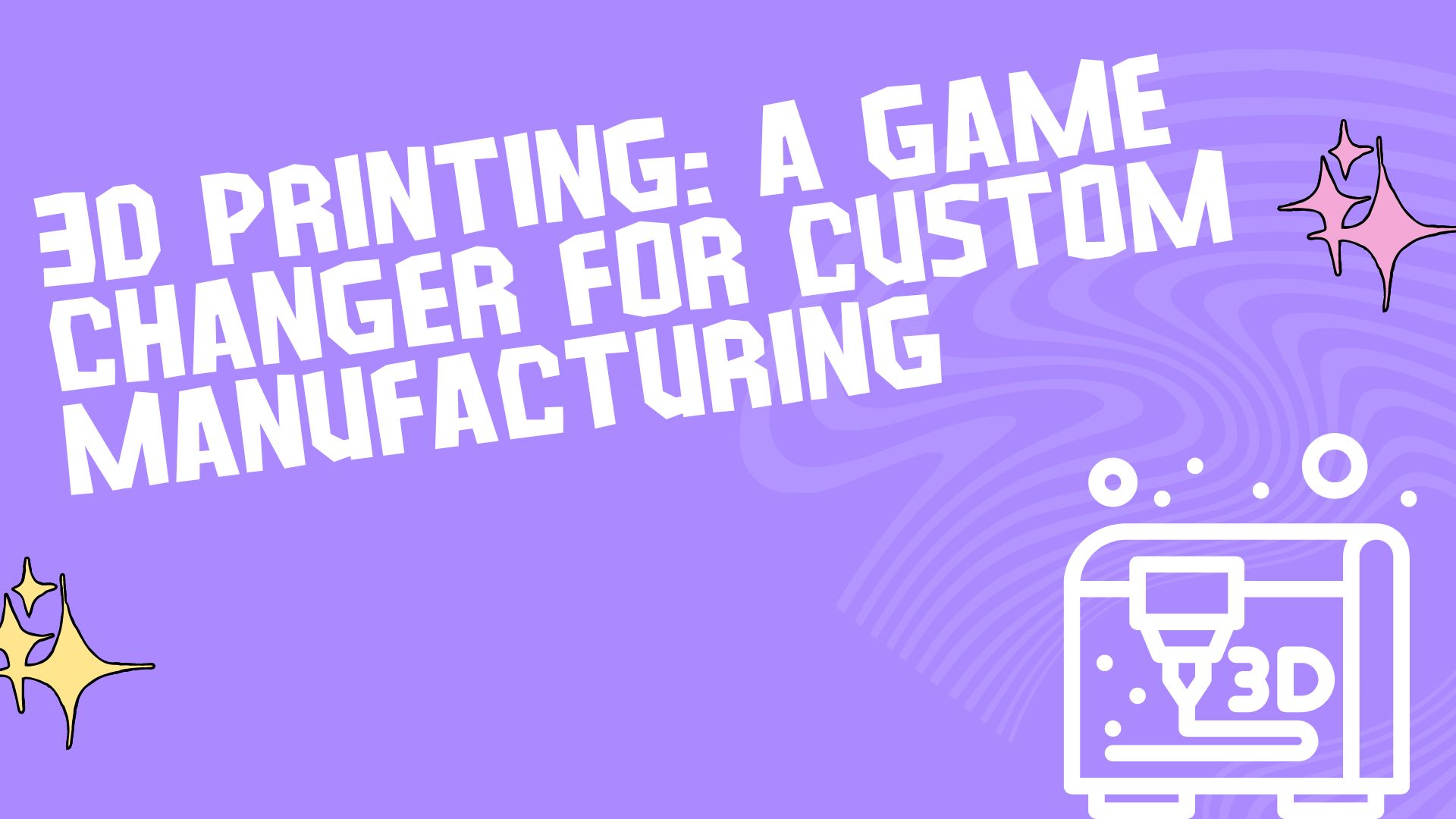In the realm of manufacturing, customization has always been a double-edged sword. While offering personalized products can attract consumers, it often comes at the cost of increased complexity, longer lead times, and higher production costs. However, with the advent of 3D printing technology, the landscape of custom manufacturing is undergoing a profound transformation. In this blog, we explore how 3D printing is emerging as a game-changer for custom manufacturing, revolutionizing traditional production processes and unlocking new possibilities for innovation.
Unleashing Creativity and Flexibility:
Traditional manufacturing methods often entail the need for specialized tooling, molds, and assembly lines, making customization challenging and expensive. However, 3D printing, also known as additive manufacturing, enables the creation of complex geometries and intricate designs with unprecedented ease and speed. By layering materials such as plastic, metal, or composite powders based on digital models, 3D printers eliminate the need for tooling, allowing manufacturers to produce customized parts and products on-demand, with minimal setup time and cost.
Empowering Design Freedom:
One of the most significant advantages of 3D printing is its ability to unleash design freedom. Unlike conventional subtractive manufacturing techniques, which are often limited by the constraints of molds and machining processes, 3D printing offers unparalleled versatility in design. Engineers and designers can create organic shapes, lattice structures, and custom features that were previously unfeasible or prohibitively expensive. This design freedom not only enhances product aesthetics but also optimizes functionality and performance, leading to innovative solutions across industries, from aerospace and automotive to healthcare and consumer goods.
Redefining Supply Chain Dynamics:
Traditional supply chains are characterized by long lead times, high inventory costs, and supply-demand mismatches. However, 3D printing has the potential to disrupt this paradigm by decentralizing manufacturing and enabling localized production. With advancements in materials science and digital manufacturing technologies, companies can leverage distributed 3D printing networks to produce parts and products closer to the point of consumption. This not only reduces transportation costs and carbon emissions but also enables just-in-time manufacturing, customization, and rapid prototyping, fostering a more agile and sustainable supply chain ecosystem.
Driving Innovation and Sustainability:
Beyond customization, 3D printing is driving innovation across various domains, from healthcare and architecture to fashion and food. In healthcare, for instance, medical professionals can leverage 3D printing to create patient-specific implants, prosthetics, and surgical guides, improving treatment outcomes and patient care. In architecture and construction, 3D printing enables the fabrication of complex building components and structures, revolutionizing the way we design and construct homes, offices, and infrastructure. Moreover, by enabling on-demand production and reducing material waste, 3D printing holds the potential to usher in a new era of sustainable manufacturing, minimizing environmental impact and resource depletion.
Conclusion:
In conclusion, 3D printing is not just a technological advancement; it is a paradigm shift in the way we conceive, design, and manufacture products. By offering unparalleled design freedom, flexibility, and efficiency, 3D printing is democratizing manufacturing and empowering businesses and consumers alike to unleash their creativity and innovation. As the technology continues to evolve and mature, we can expect to see even greater integration of 3D printing across industries, leading to a more customized, sustainable, and interconnected future. Whether it’s producing personalized consumer goods, revolutionizing healthcare, or redefining the built environment, 3D printing is indeed a game-changer for custom manufacturing, unlocking endless possibilities and reshaping the way we create and consume products in the 21st century.









